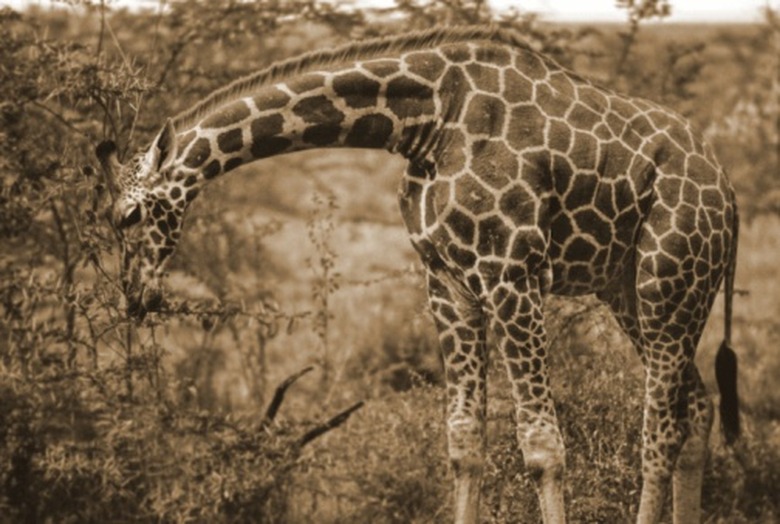Tropical Dry Forest Biome Plants
Tropical dry forests are characterized by a wet season bringing copious amounts of rain and a drought-like dry season where moisture is in short supply. Deciduous trees, those that lose their leaves at some point during the year, make up most of this biome's forest.
Tropical dry forests are characterized by a wet season bringing copious amounts of rain and a drought-like dry season where moisture is in short supply. Deciduous trees, those that lose their leaves at some point during the year, make up most of this biome's forest. Unlike a tropical rain forest with year round greenery, the shedding of the leaves of the tropical dry forest allows more sunlight to reach the forest floor. This increases the underbrush growth supporting larger herds of grazers and the animals that prey on them for food.
Indio Desnuda
Indio Desnuda is Spanish for "the naked Indian." Scientifically known as Bursera simarouba, this plant has adapted to drought conditions by having chlorophyll in its green bark. This means that Indio Desnuda can photosynthesize food even when all the leaves have dropped. Photosynthesis takes the heat of the sun, water and carbon dioxide from the air to make sugars and starches. The photosynthetic capability of Indio Desnuda may be diminished during a drought, but the plant does not have to solely rely on the starch stored within its tissues. Examples of this tree are found in the Santa Rosa National Park in Costa Rica, Central America. (ref 1)
- Tropical dry forests are characterized by a wet season bringing copious amounts of rain and a drought-like dry season where moisture is in short supply.
- The photosynthetic capability of Indio Desnuda may be diminished during a drought, but the plant does not have to solely rely on the starch stored within its tissues.
Acacias
Sometimes called thorn trees because of the many spikes interspersed between the leaves, the acacia trees dominate much of the tropical dry forest in Africa. The leaves of this tree are tiny, called pinnae, and have adapted to hold themselves vertically to reduce water loss and horizontally to gather sunlight for photosynthesis. The abundance of tiny leaves also helps with predation from browsing animals. The animals must work around the thorns to feed and it is more likely that some leaves will be left behind. The trees tend to have large canopies and complex root systems. Some acacias have tap root systems that can go deep enough to tap into the water table. Others spread out so they can catch any available ground water closer to the surface. Acacias grow in Africa, Australia, India and South America. There are roughly 700 species of acacias, all members of the legume family. (ref 2)
- Sometimes called thorn trees because of the many spikes interspersed between the leaves, the acacia trees dominate much of the tropical dry forest in Africa.
- The animals must work around the thorns to feed and it is more likely that some leaves will be left behind.
Baobabs
There are eight different types of baobab trees found in the dry tropical forests of Africa, northwest Australia and the island of Madagascar. The largest is the Adonsonia digitata and is found in the southern parts of Africa. Native people tell stories about the tree being planted upside down because when its leaves have dropped, the top resembles the spider-webbed design of a root system. Average height is between 80 and 100 feet, and the main trunk can grow to be just as wide. One, called the Platland Baobab, is large enough to house a pub. The pale-pink to white blossoms, up to 8 inches wide, flower at night and are pollinated by fruit bats. The resulting seedpods stay on the tree until foraged by monkeys or blown down by the wind. The seeds are not edible, but the monkeys, as well as humans, eat the powdery substance within the pods. African tribesmen mix the powder with water to make a drink that is high in ascorbic acid.
- There are eight different types of baobab trees found in the dry tropical forests of Africa, northwest Australia and the island of Madagascar.
- The seeds are not edible, but the monkeys, as well as humans, eat the powdery substance within the pods.
